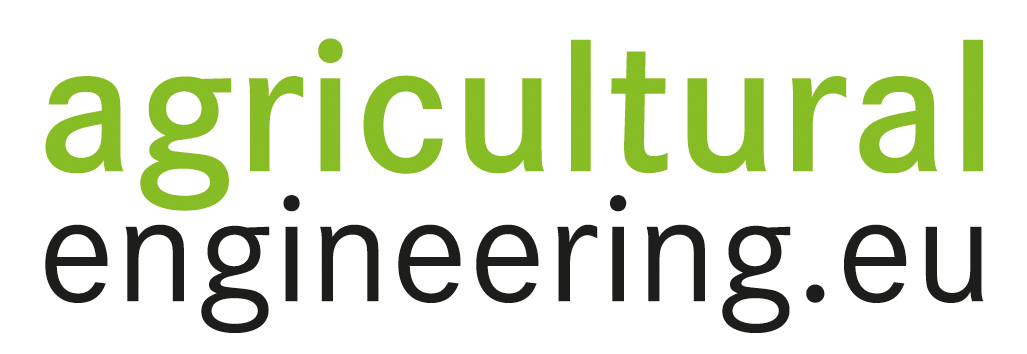Remaining value development of tractors ‒ a call for the application of a differentiated market value estimation
DOI:
https://doi.org/10.15150/lt.2022.3273Abstract
Estimates of market values are important for decisions about type and economic useful life of tractors as well as for assessing appropriate used prices. In this context, a linear relationship between the value and both the intensity of use and the age is often assumed. Differences between manufacturers, power classes or configuration are insufficiently considered. This paper shows that market values and thus also the development of remaining values can be better described with nonlinear functions, in particular with exponential functions. It shows that the development differs between manufacturers and power classes. On the basis of online advertisements we estimate market values using multiple linear regression models. They are validated with auction results and compared with the remaining value formula of the KTBL. The models based on online advertisements appear to be suitable to represent real sales. In some cases substantial differences in the devaluation costs of individual power classes but also manufacturers arise from a differentiated consideration of the remaining value based on the market value. In simple applications, average considerations are sufficient, but in the case of short usage periods, low utilization rates and small power classes, we recommend to estimate an individual remaining value. For this purpose as well as for an objective assessment of the market values of used tractors we provide the respective parameters in the appendix.
References
References
Benjamini, Y.; Hochberg, Y. (1995): Controlling the False Discovery Rate: A Practical and Powerful Approach to Multiple Testing. Journal of the Royal Statistical Society. Series B (Methodological) 57(1), pp. 289–300, https://doi.org/10.1111/j.2517-6161.1995.tb02031.x
Burnham, K.P.; Anderson, D.R. (2004): Multimodel Inference. Sociological Methods & Research 33(2), pp. 261–304, https://doi.org/10.1177/0049124104268644
Calcante, A.; Fontanini, L.; Mazzetto, F. (2013): Repair and Maintenance Costs of 4WD Tractors in Northern Italy. Transactions of the ASABE 56(2), pp. 355–362, https://doi.org/10.13031/2013.42660
Cross, T.L.; Perry, G.M. (1996): Remaining Value Functions for Farm Equipment. Applied Engineering in Agriculture 12(5), pp. 547–553, https://doi.org/10.13031/2013.25682
Daninger, N.; Gunderson, M.A. (2017): The Pricing and Depreciation Patterns of Used Tractors. In: 2017 Annual Meeting, July 30-August 1, Chicago, Illinois, Agricultural and Applied Economics Association.
Fenollosa Ribera, M.L.; Guadalajara Olmeda, N. (2007): An empirical depreciation model for agricultural tractors in Spain. Spanish Journal of Agricultural Research 5(2), pp. 130–141, https://doi.org/10.5424/sjar/2007052-233
Granoszewski, K.; Spiller, A. (2012): Images von Traktorenmarken – eine Analyse der Nutzendimensionen. Jahrbuch der Österreichischen Gesellschaft für Agrarökonomie 21(1), S. 63–72
Hoop, D.; Schwarz, A.; Lips, M. (2014): Vollkostenkalkulationen für Lohnarbeiten. Agrarforschung Schweiz 9(5), S. 352–357
KTBL (Hg.) (2004): Betriebsplanung Landwirtschaft 2004/2005. Daten für die Betriebsplanung in der Landwirtschaft, Darmstadt, Kuratorium für Technik und Bauwesen in der Landwirtschaft, 19. Aufl.
KTBL (Hg.) (2006): Betriebsplanung Landwirtschaft 2006/2007. Daten für die Betriebsplanung in der Landwirtschaft, Darmstadt, Kuratorium für Technik und Bauwesen in der Landwirtschaft, 20. Aufl.
KTBL (Hg.) (2008): Betriebsplanung Landwirtschaft 2008/2009. Daten für die Betriebsplanung in der Landwirtschaft, Darmstadt, Kuratorium für Technik und Bauwesen in der Landwirtschaft, 21. Aufl.
KTBL (Hg.) (2010): Betriebsplanung Landwirtschaft 2010/2011. Daten für die Betriebsplanung in der Landwirtschaft, Darmstadt, Kuratorium für Technik und Bauwesen in der Landwirtschaft, 22. Aufl.
KTBL (Hg.) (2012): Betriebsplanung Landwirtschaft 2012/13. Daten für die Betriebsplanung in der Landwirtschaft, Darmstadt, Kuratorium für Technik und Bauwesen in der Landwirtschaft, 23. Aufl.
KTBL (Hg.) (2014): Betriebsplanung Landwirtschaft 2014/15. Daten für die Betriebsplanung in der Landwirtschaft, Darmstadt, Kuratorium für Technik und Bauwesen in der Landwirtschaft, 24. Aufl.
KTBL (Hg.) (2016): Betriebsplanung Landwirtschaft 2016/17. Daten für die Betriebsplanung in der Landwirtschaft, Darmstadt, Kuratorium für Technik und Bauwesen in der Landwirtschaft, 25. Aufl.
KTBL (Hg.) (2018): Betriebsplanung Landwirtschaft 2020/21. Daten für die Betriebsplanung in der Landwirtschaft, Darmstadt, Kuratorium für Technik und Bauwesen in der Landwirtschaft, 26. Aufl.
KTBL (Hg.) (2020): Betriebsplanung Landwirtschaft 2020/21. Daten für die Betriebsplanung in der Landwirtschaft, Darmstadt, Kuratorium für Technik und Bauwesen in der Landwirtschaft, 27. Aufl.
KTBL (Hg.) (2000): Taschenbuch Landwirtschaft. Daten für betriebliche Kalkulationen in der Landwirtschaft, Münster, Landwirtschaftsverl., 20. Aufl.
KTBL (Hg.) (2002): Taschenbuch Landwirtschaft. Daten für betriebliche Kalkulationen in der Landwirtschaft, Münster, Landwirtschaftsverl., 21. Aufl.
Morris, J. (1988): Estimation of tractor repair and maintenance costs. Journal of Agricultural Engineering Research 41(3), pp. 191–200, https://doi.org/10.1016/0021-8634(88)90178-3
Perry, G.M.; Bayaner, A.; Nixon, C.J. (1990): The Effect of Usage and Size on Tractor Depreciation. American Journal of Agricultural Economics 72(2), pp. 317–325, https://doi.org/10.2307/1242335
Schmid, A.; Krön, K. (2018): Kalkulation und Kostenanalyse im Lohnunternehmen, Darmstadt, KTBL, 2. Aufl.
Schroers, J.O.; Sauer, N.; Krön, K.; Uppenkamp, N. (2020): Fixe und variable Maschinenkosten unter Berücksichtigung eines spezifischen Plan-Restwerts. Landtechnik 75(4), https://doi.org/10.15150/lt.2020.3250
Stirnimann, R.; Renius, K.T. (2020): Gesamtentwicklung Traktoren. In: Jahrbuch Agrartechnik 2019, Band 31. Hg. Frerichs, L., Braunschweig, S. 50–62
traktorpool.de (2016): Musterkaufvertrag B2B. https://www.traktorpool.de/pdfs/Musterkaufvertrag-B2B.pdf, accessed on 11 Nov 2020
traktorpool.de (2019): traktorpool auf Platz 1 der meist genutzten Agrar Websites. https://www.traktorpool.de/blog/landwirtschaft/traktorpool-auf-platz-1-der-meist-genutzten-agrar-websites/, accessed on 10 Oct 2020
Unterschultz, J.; Mumey, G. (1996): Reducing Investment Risk in Tractors and Combines with Improved Terminal Asset Value Forecasts. Canadian Journal of Agricultural Economics 44(3), pp. 295–309, https://doi.org/10.22004/ag.econ.24119
Uppenkamp, N. (1998): Wertentwicklung von Schleppern – Restwertermittlung in Abhängigkeit von Fabrikat, Nutzungsintensität und Alter. VDI Berichte 1449, S. 53–55
Walley, K.; Custance, P.; Taylor, S.; Lindgreen, A.; Hingley, M. (2007): The importance of brand in the industrial purchase decision: a case study of the UK tractor market. Journal of Business & Industrial Marketing 22(6), pp. 383–393, https://doi.org/10.1108/08858620710780145
White, H. (1980): A Heteroskedasticity-Consistent Covariance Matrix Estimator and a Direct Test for Heteroskedasticity. Econometrica 48(4), pp. 817, https://doi.org/10.2307/1912934
Wilson, P. (2010): Estimating Tractor Depreciation: the Impact of Choice of Functional Form. Journal of Farm Management 13(12), pp. 799–818
Wilson, P.; Tolley, C. (2004): Estimating Tractor Depreciation and Implications for Farm Management Accounting. Journal of Farm Management 12(1), pp. 5–16
Wu, J.; Perry, G.M. (2004): Estimating Farm Equipment Depreciation: Which Functional Form Is Best? American Journal of Agricultural Economics 86(2), S. 483–491, https://doi.org/10.1111/j.0092-5853.2004.00593.x





